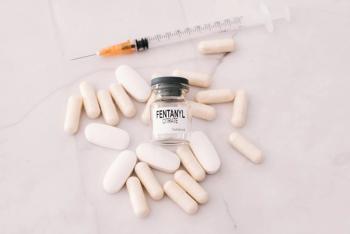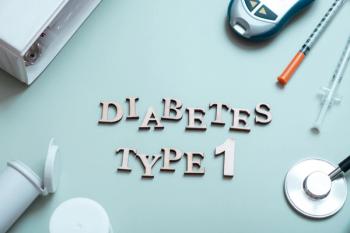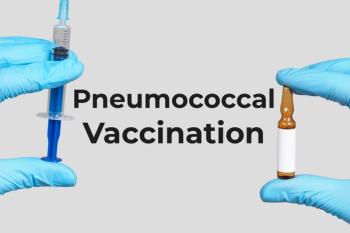
Are Rebates Responsible for Higher Drug Costs?
A new study shows how the Medicare donut hole could be costing patients.
Drug rebates are often touted as a way to reduce overall drug costs, but new research published in JAMA Internal Medicine argues that rebates end up driving up costs for Medicare Part D patients and for Medicare as a whole.
The
The problem
The problem, according to the study, is the difference between the net price and the list price of a drug. The net price is a reduced price when a manufacturer works with a payer (in the case of Medicare, the Part D plan sponsor and the
Fig. 1The authors of the study concluded that because the price paid by patients for drugs is determined by the list price, not the net price, the payment burden shifts from manufacturers and sponsors to patients and Medicare (Fig. 1). For the first $3,700 of annual drug spending, the patient pays a $400 deductible, and then drug costs are shared between the patient and the payer, 25% and 75%, respectively. After this comes the “donut hole,” where the patient, payer, and manufacturer pay 40%, 10%, and 50%, respectively. If a patient needs more medications, catastrophic coverage phase kicks in at $8071, and Medicare pays 80%, plans 15%, and patients 5%.
During these phases, patients often pay flat fee copayments, but more and more prescriptions require a patient to pay up to 100% of the drug’s price through deductibles or a fixed percentage, which is determined by the negotiated price and not the net price.
Up next: What this means for patients
For patients, this means that many more are reaching the “donut hole” more quickly, increasing the amount of their out-of-pocket costs. The process also makes it complicated to choose a drug regimen. The study gives the example of two hepatitis C medication regimens, Harvoni (ledipasvir/sofosbuvir) and Zepatier (elbasvir/grazoprevir). The full cost for Harvoni was $94,916 and the full cost for Zepatier was $54,841, according to the study. The manufacturers would receive roughly the same net price over the course of therapy. Because the cost is based on the list price and not the net price, the out-of-pocket cost for each drug would be $6,995 for Harvoni and $4,991 for Zepatier.
Fig. 2For Medicare, this means increased spending overall because patients reach catastrophic coverage more quickly (Fig. 2). According to the research, for high-cost drugs an increase in the list price and rebate “lowers the share of the prescription that the plan is obligated to pay and that the pharmaceutical manufacturer is obligated to discount, saving money for both parties. Meanwhile, both the beneficiary’s out-of-pocket costs and Medicare spending increase.”
A solution?
The study authors offer suggestions for reforming part D as a way to alleviate out-of-pocket spending, concluding that “out-of-pocket spending and progression through the Part D benefit should no longer be linked to the list price of a drug.”
Lead author Stacie B. Dusetzina, PhD, Assistant Professor of Pharmacy and Public Health,
The authors suggest two solutions. The first is to lower patient spending by encouraging flat copayments rather than coinsurance and calculating costs based on net prices rather than list prices. The second is to lower Medicare’s share of spending by decreasing incentives to reach the catastrophic threshold quickly by increasing sponsors’ share of the cost burden in the catastrophic phase.
However, Dusetzina noted that drug prices are not the only factor. “We need sensible solutions to deal with drug prices and the system, overall. While we would like to see better insurance coverage for drugs, we cannot ignore trends in drug prices. We need to address prices and coverage to have any meaningful improvements in access to care,” she said.
Nicole Longo, Senior Manager of Public Affairs at the Pharmaceutical Research and Manufacturers of America (
Cathryn Donaldson, Director of Communications and Public Affairs at
“Solutions to this issue aren’t complicated,” Donaldson added. “We need more transparency into how manufacturers set drug prices, more competition through streamlined processes and introducing generics and biosimilars, and an enhanced focus on value to the consumer.”
A spokesperson for
The pharmacist’s role
What does all this mean for the pharmacist? Dusetzina said that pharmacists can help patients navigate through insurance and the complicated world of Medicare. “Pharmacists are in an excellent position to help patients who may be struggling to pay for their treatments because they interact with the patient during this important transaction,” she said. “They are also educated about alternative treatments available that may have more generous coverage by the patient’s insurance or assistance programs that could help patients with out-of-pocket costs.”
Reference
1. Dusetzina SB, Conti RM, Yu NL, et al. Association of prescription drug price rebates in Medicare part D with patient out-of-pocket and federal spending. JAMA Intern Med. Published online May 30, 2017. doi:10.1001/jamainternmed.2017.1885.
Newsletter
Pharmacy practice is always changing. Stay ahead of the curve with the Drug Topics newsletter and get the latest drug information, industry trends, and patient care tips.





















































































































































